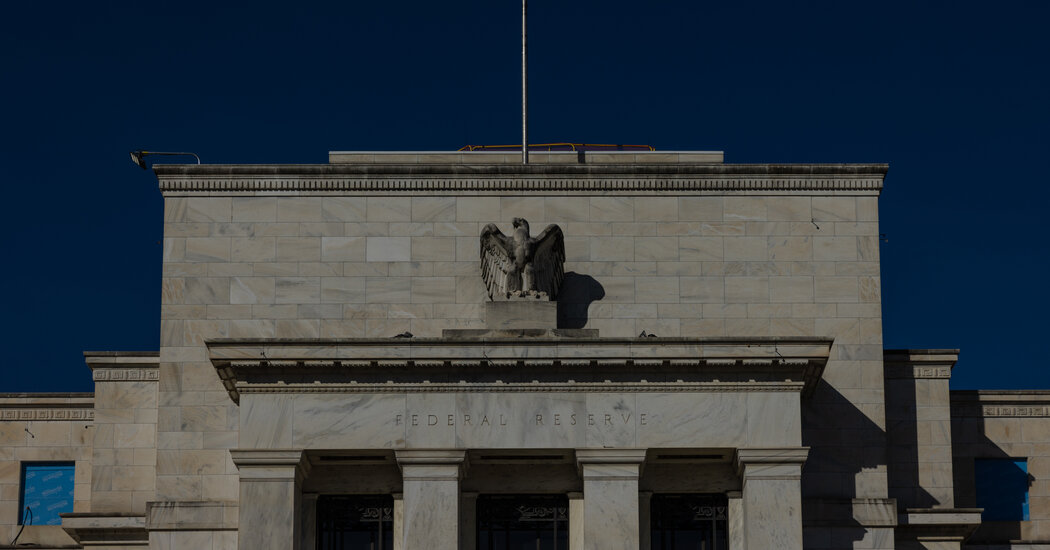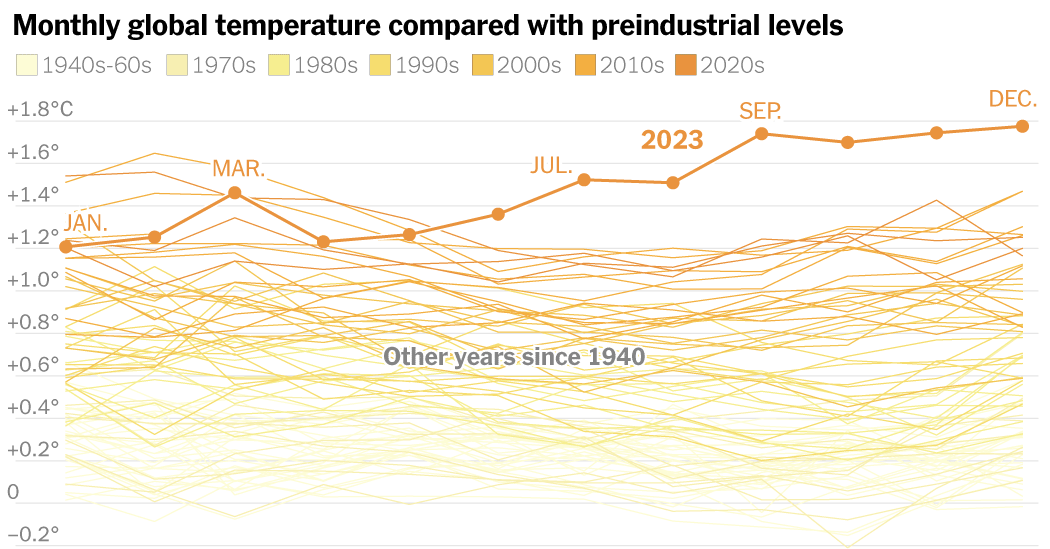The Federal Reserve pressed pause on interest rate cuts last month. The minutes from its January meeting suggest the hiatus is likely to be a long one.
A record of the central bank’s Jan. 28-29 meeting, released on Wednesday, showed that officials have not written off rate cuts completely, and they still expect to lower borrowing costs over time. But slow progress on taming inflation, combined with significant uncertainty about how President Trump’s economic agenda will shape up, has solidified their position that the best course of action for now is to stand pat until they have more clarity on the economic outlook.
So long as the labor market stayed solid, officials had concluded that “they would want to see further progress on inflation before making additional adjustments to the target range for the federal funds rate,” the minutes said. A majority also endorsed a “careful approach” to further monetary policy decisions in light of what they described as “the current high degree of uncertainty.”
Officials convened for their most recent meeting just days after Mr. Trump returned to the White House with a pledge not only to redirect global trade relations and immigration flows but also to bolster businesses through tax cuts and deregulation.
So far, the president has followed through on some of these promises, especially in regard to tariffs. His administration has raised levies on China, announced reciprocal tariffs on trading partners with policies Mr. Trump deems “unfair” and threatened 25 percent charges on automobile, semiconductor and pharmaceutical imports. These measures come on the heels of 25 percent duties on steel and aluminum.
The minutes from the January meeting showed that officials were wary about the potential economic impact of the tariffs, as well as policies related to mass deportations, another cornerstone of Mr. Trump’s plans. Both were cited as “having the potential to hinder the disinflation process,” according to the minutes.
Fed officials more broadly saw “upside risks to the inflation outlook,” the minutes said, with some warning that “it might be especially difficult to distinguish between relatively persistent changes in inflation and more temporary changes that might be associated with the introduction of new government policies.”
Whether the Fed will need to alter its plans for interest rates as a result is not yet clear.
Christopher J. Waller, a governor on the board, suggested in a speech on Monday that the Fed could “look through” the potential inflationary effects posed by tariffs, given his expectation that they will be fleeting in nature. Moreover, he said, any rise in prices from these policies may be counteracted by others, which could have “positive supply effects and put downward pressure on inflation.”
For the time being, Fed officials believe their current interest rate settings — at 4.25 percent to 4.5 percent — are holding back economic activity and continuing to weigh on inflation, which as of last month came in hotter than expected.
Inflation data tends to come in higher at the start of the year before moderating as a result of seasonal quirks in the data, which officials acknowledged at the January meeting. But the minutes showed that they remained on guard to anything that might hinder their efforts to bring price pressures back under control.
Also in January, officials discussed whether to slow down or pause the shrinkage of their nearly $7 trillion balance sheet, over concerns about disruptions related to the federal debt limit, which caps the amount of money the United States is authorized to borrow to meet its financial obligations.
Through so-called extraordinary measures, the Treasury Department has been able to buy a couple of months until that limit is breached, after which the government may be at risk of defaulting on its debt. But concerns about “significant swings” in the level of bank reserves, which are deposits held at the Fed, may prompt the central bank to again change course, the minutes showed.
The last change to the Fed’s “quantitative tightening” policy occurred in May, when it slowed the pace at which it would allow maturing government securities to roll off its balance sheet.



